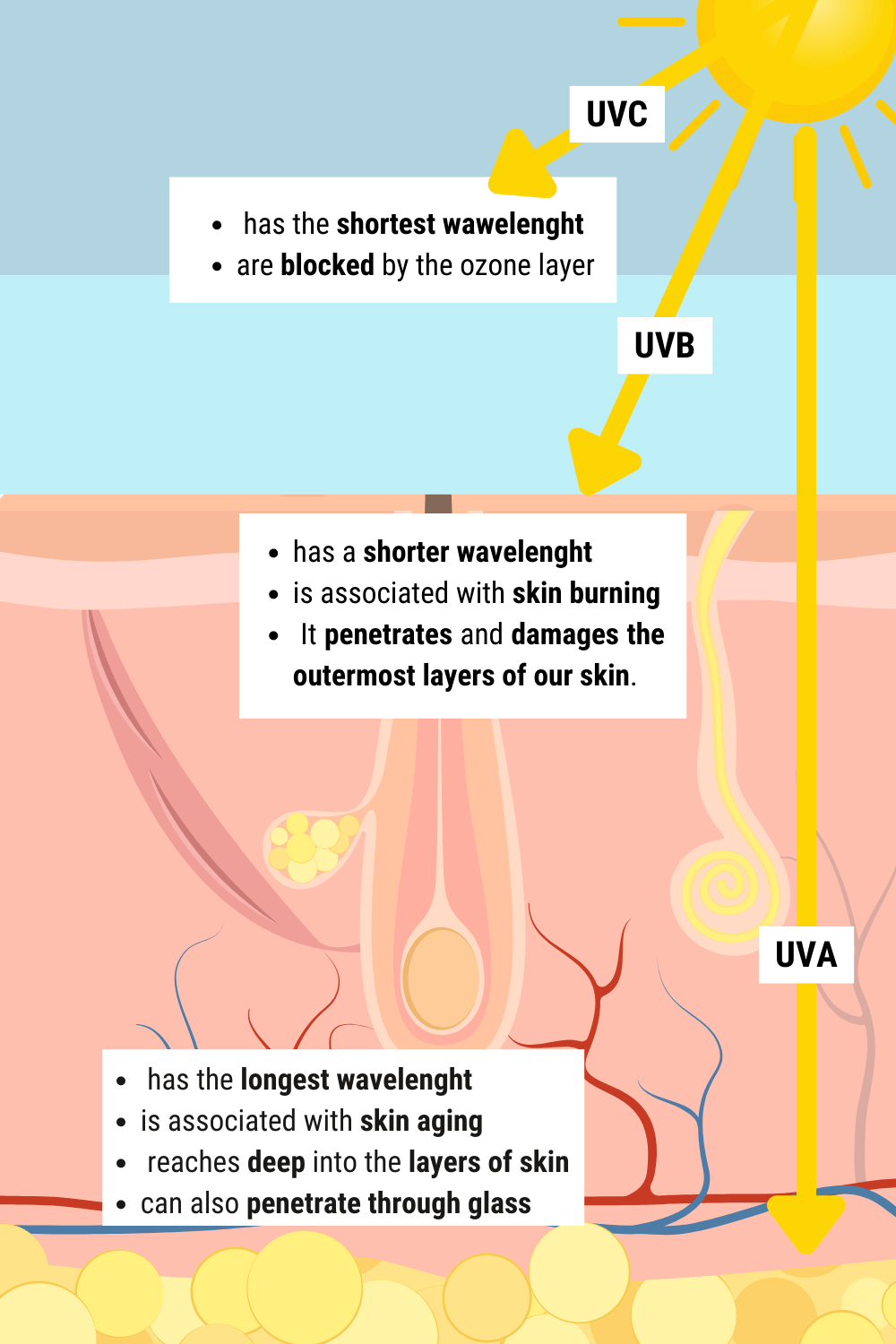The sun’s ultraviolet (UV) radiation is one of the main environmental factors that affects skin health. Of all the elements of sunshine, UV rays are the most hazardous since they can enter the skin and cause a variety of negative effects. This study emphasizes the basic mechanisms and pathways that underlie skin damage, with a particular focus on the involvement of reactive oxygen species (ROS) in UV-induced photodamage.
Methods
A comprehensive examination of the body of research was done in order to comprehend the function of ROS in UV-induced photodamage. This involved examining studies related to the production, regulation, and removal of ROS, as well as their impact on skin cells and tissues.
Key Results
1. UV Ray Types and Their Absorption
Based on wavelength, UV radiation is divided into three categories:
UVC (100-290 nm): Seldom penetrates the skin since it is largely obstructed by the ozone layer.
UVB (290–320 nm): Causes direct DNA damage and sunburn by penetrating the epidermis.
UVA (320–400 nm): This wavelength penetrates the dermis more deeply and produces ROS, which inadvertently damages DNA.
2. Generation of Reactive Oxygen Species (ROS) : ROS include hydroxyl radicals (OH•) and superoxide (O2•−). They are primarily produced in the mitochondria and through the activity of NADPH oxidases (NOX). The generation of ROS is increased by UV exposure, and this can lead to oxidative stress and damage to biological components.
3. ROS-induced DNA Damage : UV-generated ROS can cause direct DNA damage by triggering the formation of cyclobutane pyrimidine dimers (CPDs) and 6-4 photoproducts (6-4PPs). These DNA lesions can block replication and transcription, leading to mutations and chromosomal aberrations.
4. ROS’s Inflammatory Function : ROS trigger many signaling pathways, such as AP-1, NF-κB, and MAPK, resulting in the synthesis of matrix metalloproteinases (MMPs) and inflammatory cytokines (IL-1β, IL-6, and TNF-α). The aging process of the skin, which is marked by wrinkles, elasticity loss, and hyperpigmentation, is facilitated by this inflammatory reaction.
5. Damage to Mitochondrial DNA and Apoptosis : Damage to mitochondrial DNA by ROS can result in malfunctioning mitochondria and increased production of ROS. This intensifies the harm to cells by generating a vicious loop. Moreover, ROS trigger apoptosis by causing the mitochondria to produce cytochrome c and activating the proteases caspases, which cause cell death.
6. Regulation of Collagen and Extracellular Matrix (ECM) : Collagen and other ECM components degrade as a result of ROS-mediated MMP activation. Wrinkles develop as a result, and the skin’s structural integrity is lost. Skin aging is exacerbated when ROS inhibit TGF-β signaling, which further lowers collagen formation.
7. Mechanisms of ROS Detoxification: Enzymatic antioxidants such as glutathione peroxidase, catalase, and superoxide dismutase, as well as non-enzymatic antioxidants such flavonoids and vitamins A, C, and E, neutralize reactive oxygen species (ROS) and lessen oxidative damage in cells. Prolonged exposure to UV radiation, however, can weaken these mechanisms and result in ongoing oxidative damage.
Link to the Article: https://tinyurl.com/4997de5u

